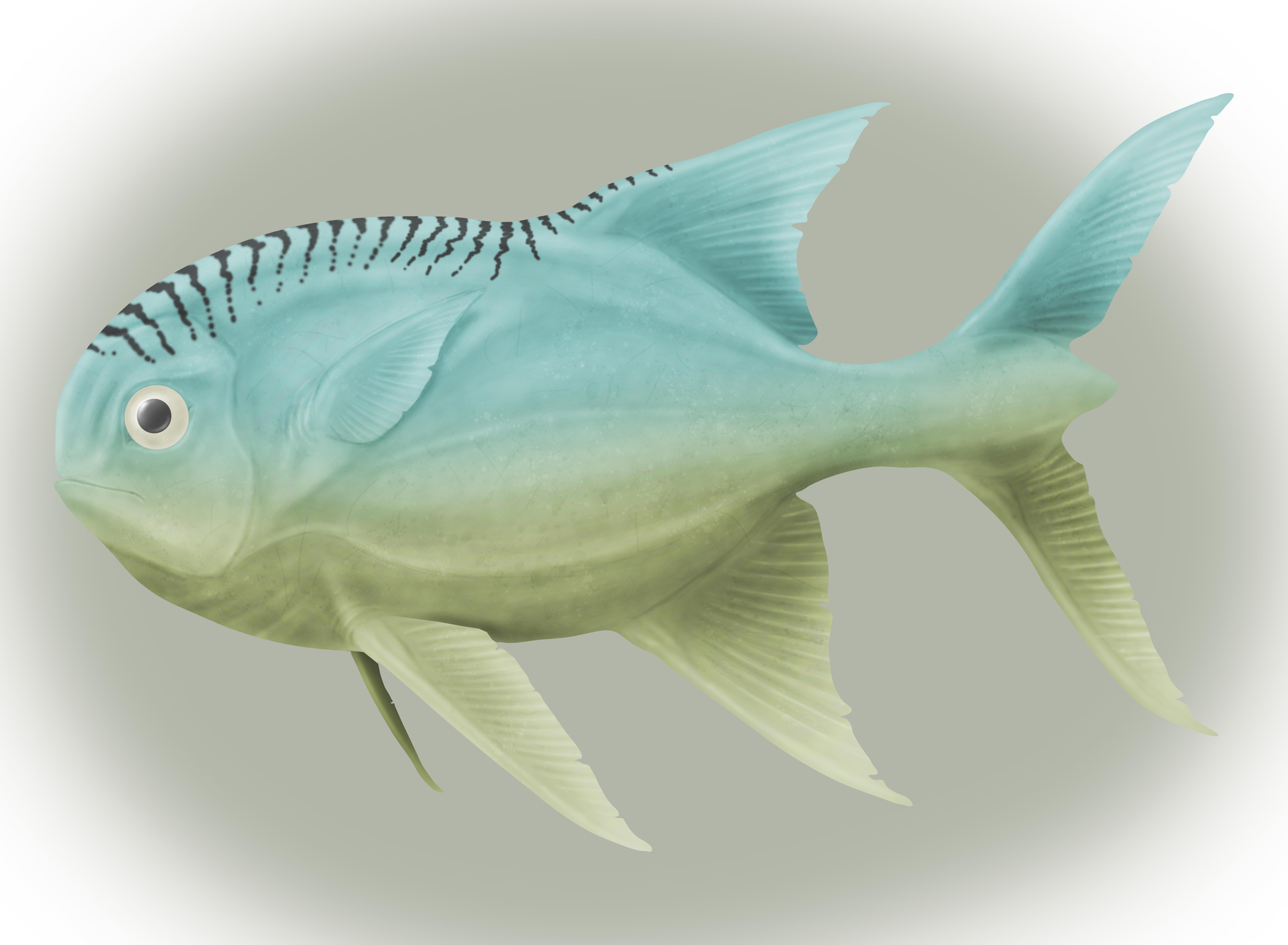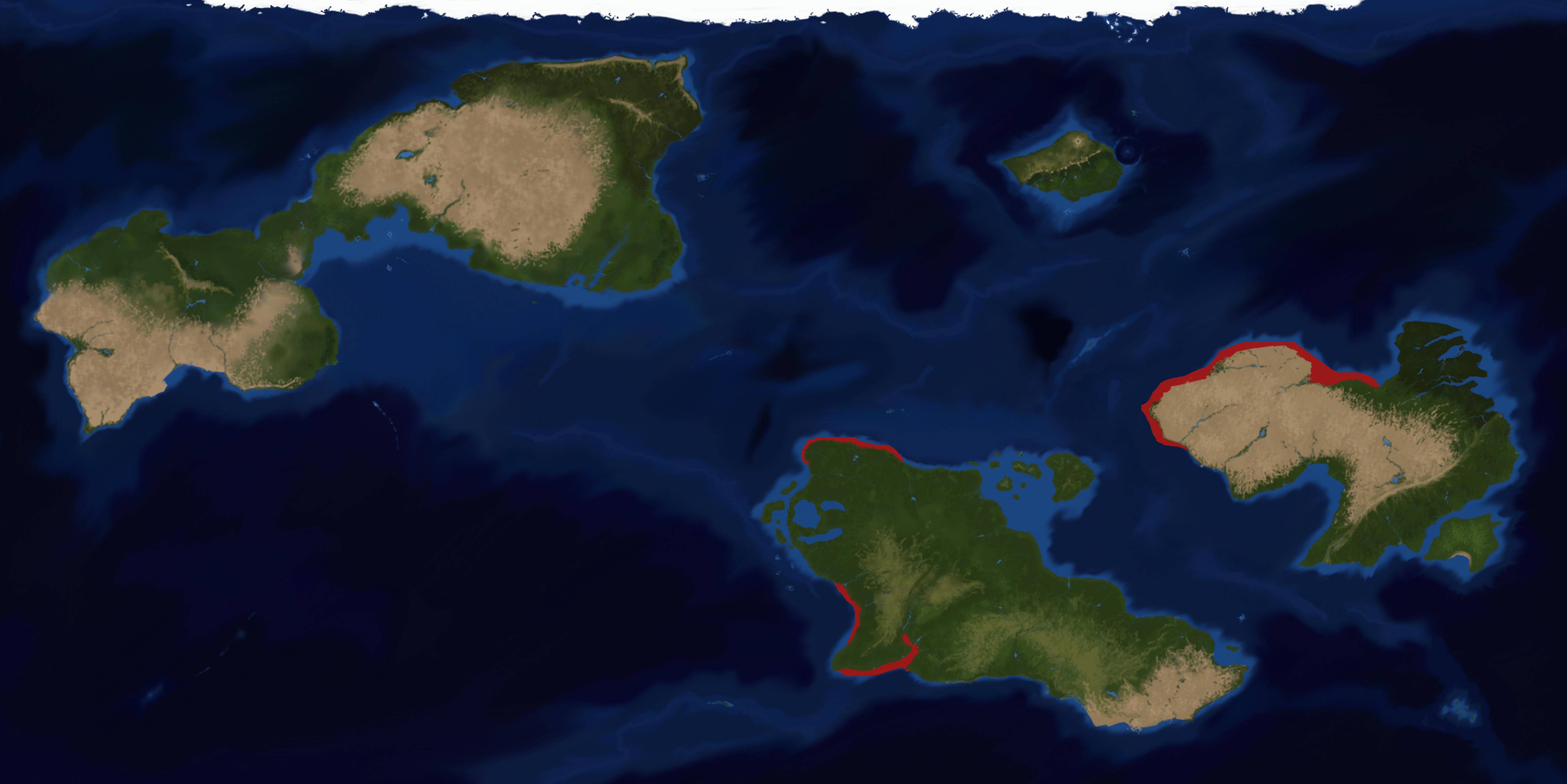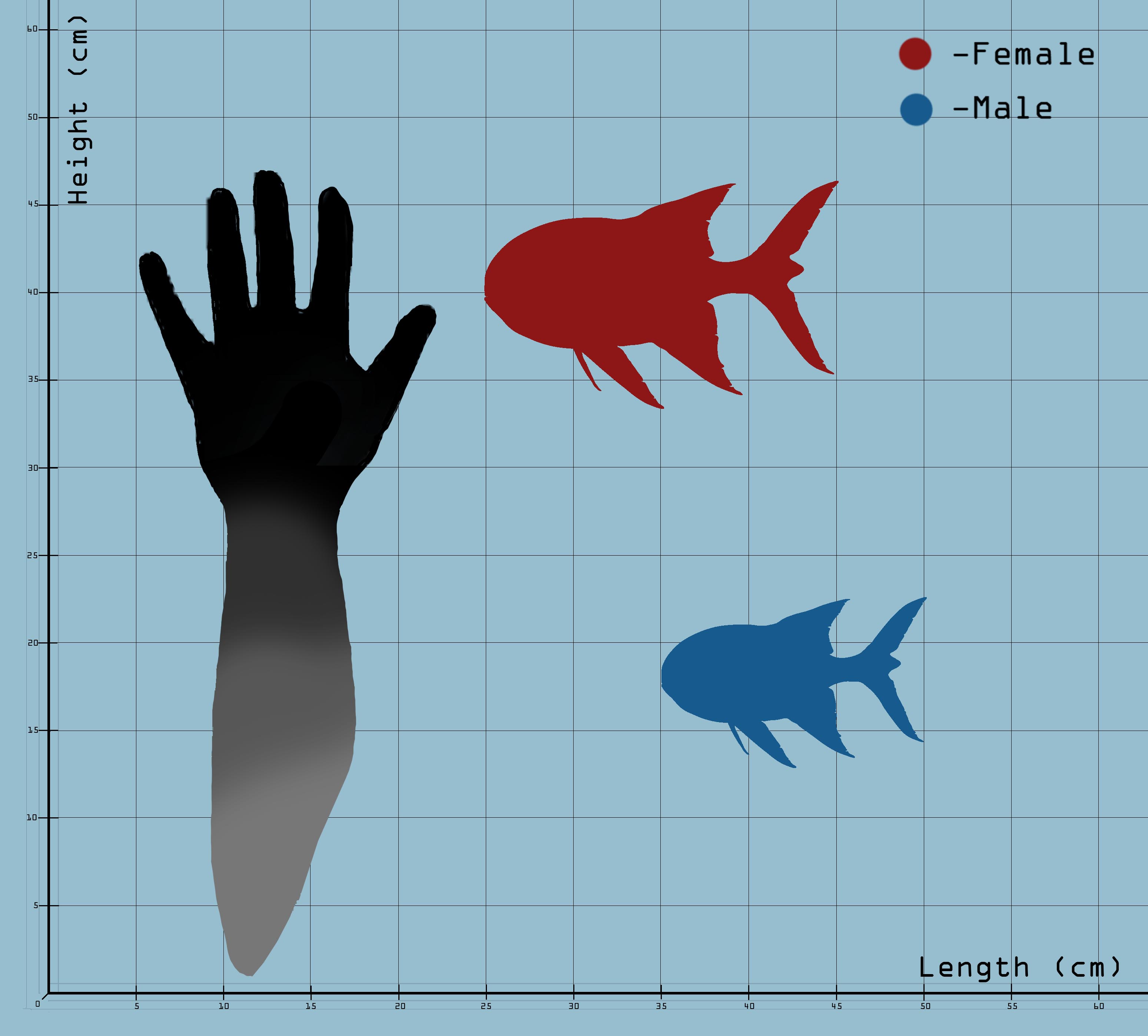Southern Sogero
Sogero sogero is a common animal often seen living around rocky shores in the coastal habitats of the southern hemisphere.
S. sogero is often compared to Earth’s Damselfishes (†Chromis chromis) both in shape and occupied niche.
This amphibian lives in schools varying in numbers from 15 to 30 and is easily seen poking the Rocks with its round snout, scraping off algae, proto-sponges, and eggs attached to them.
The teeth evolved to break up the proto-sponges and eggs' protective exterior, giving the animal a particularly sharp teeth set while keeping the bite force minimal.
Males often battle for territory and dominance over the gyneceum even to the point of killing the contender; weak and dead individuals are often cannibalized by the other members of the group for energy, especially during the winter season, when food is scarce.
The animal is often featured in documentaries of local fauna for their peculiar defense mechanism; when they feel threatened, they lay in rock's cracks belly side up, flattening the fins against their body as to confuse predators by camouflaging as pebbles.
Not being afraid of humans, they are often approached by divers seeking close contact with Wildlife.
The animal is often served baked in pairs along with some Mineplant roots and Caviar, even if it’s not considered to be a particularly valued meat; the dish is most commonly found in small maritime communities around the animal's habitat.
Particularly famed as a dish in the areas around Elder's Cape.
Basic Information
Anatomy
- Head very rounded, very prominent brow ridges; armor Euabsorbed.
- Teeth pointing outward, subrectangular and very sharp; only present in the jaw.
- Teeth in the maxilla and premaxilla fused into one, very sharp, plaque.
- Body rounded with deep lateral depressions.
- Dorsal fin growing from the end of the body, at the base of the Gill tail.
- Anal I growing centrally to the body, projecting perpendicularly to the belly; Anal II not coupled growing from the belly under the Anal I and projecting caudally.
- Gill tail very thin compared to the body ending in a Gill fan with farely high ridges and a steep caudal drop.
- Presence of two, albeit small, caudal fins.
Genetics and Reproduction
Polygynous animal.
The species reproduces in the spring, during the algae blooming period.
Each of the males of the group will mate with the already predetermined gyneceum, usually composed by three to five females; some females are shared by multiple males, giving rise to mating fights over the overlapping females.
Male fights are brutal; the duellists will charge and bite each other, even causing heavy bleeding to the contestant.
If one male perishes during said fights, then the winning male inherits the loser's gynaeceum as well, doubling the male's mating pool.
The females will incubate the eggs inside the duct for a week and a half before laying them in small cracks between the rocks.
The eggs hatch after a month from being laid, the spawn will live the first period of their lives inside the cracks, feeding off of phytoplankton before joining the adults outside.
Growth Rate & Stages
Ontogeny not very marked in the species.
Young individuals will be completely sand coloured to better hide between the rocks.
The youngs will join the adults three weeks after birth, starting to feed on the young algal buds growing on the rocks before learning how to eat proto-sponges and eggs.
Loss of natal aculeus at the third week of life.
Ecology and Habitats
Epipelagic species living at depths between 10 and 200 m.
They prefer strong currents and rocky shores; often found living near rocks as well.
Dietary Needs and Habits
The species will feed mostly on algae growing on rocks but also proto-sponges and if they find some, even eggs.
Young specimens will feed on phytoplankton.
Biological Cycle
Periannial creature with few dips in activity year-wide.
During the winter season, they cull the groups by cannibalizing weak members.
Additional Information
Social Structure
The species lives in schools of fifteen to thirty specimens, with several males each having a personal gynaeceum.
Species averagely social in nature, with limited but frequent interactions.
Domestication
Kept in home aquariums as a pet however the lack of water currents in tanks prevent them from breeding.
Uses, Products & Exploitation
fairly valuable in the pet trade and of limited economic interest as a food source.
Geographic Origin and Distribution
Perception and Sensory Capabilities
Excellent color vision
Symbiotic and Parasitic organisms
Affected by some skin parasites and intraocular worms.
Scientific Name
Eoichthyia; Tartarosomnia; Rotunducephalidae; Gladiopinneoidea; Quadratocephaloidea; Sogeridae ; Sogerinae; Sogero; S. sogero
Lifespan
4 years
Conservation Status
Least Concern: No measures underway to protect the species.
Population trend: STABLE
Average Weight
25 to 200 gr
Body Tint, Colouring and Marking
Azure to aquamarine body with sandy coloured to rock gray belly.
Dark striping starting from the forehead to the base of the dorsal fin.
Remove these ads. Join the Worldbuilders Guild












Fascinating. So is there a particular predator that prefers this species as a meal?
Yes like in all things in nature, there is a balance, even if dynamic. A page for a predator for this species will come in the future, however I first need to finish drawing it
Wonderful! I'll keep an eye out for when it appears. I look forward to reading it!